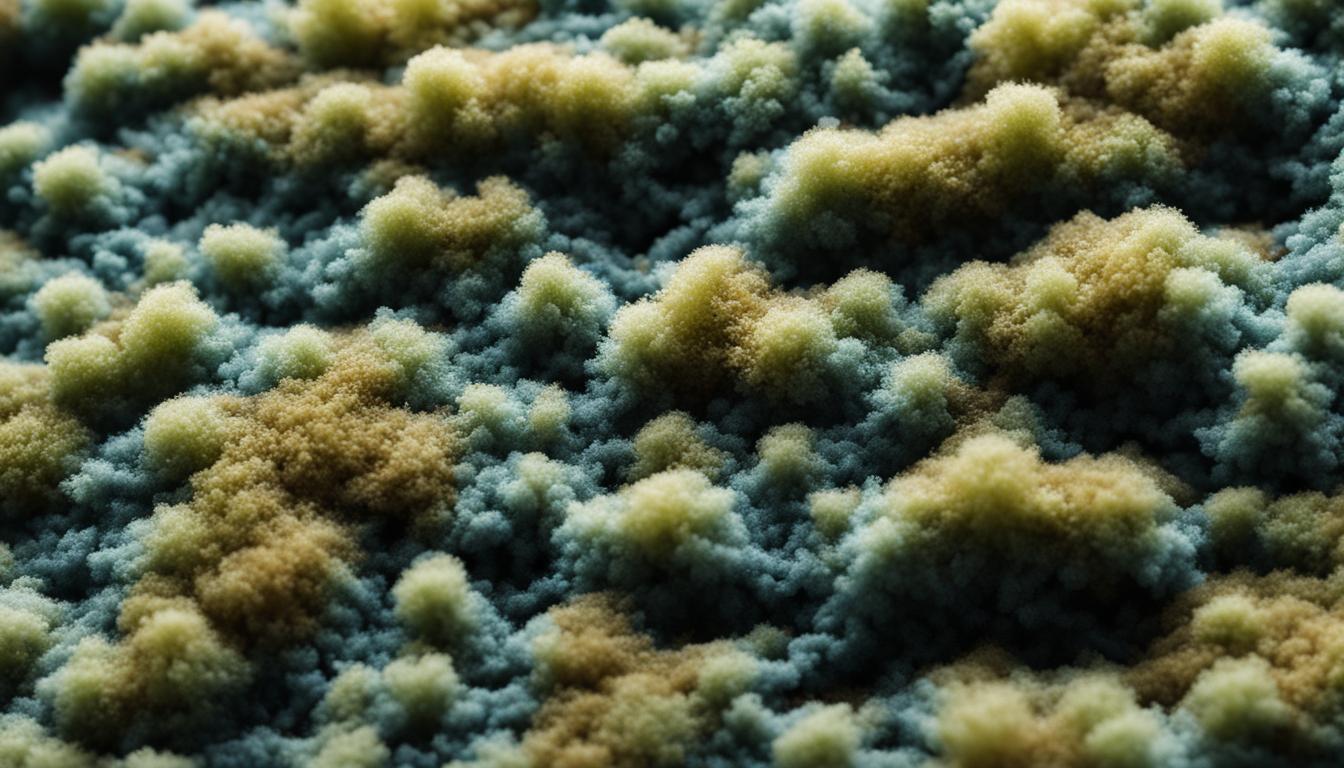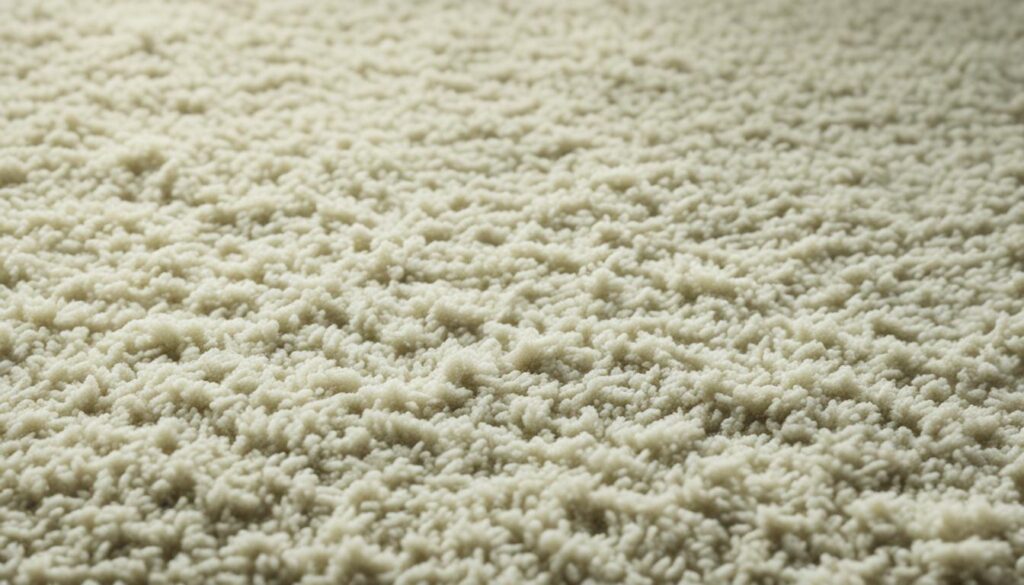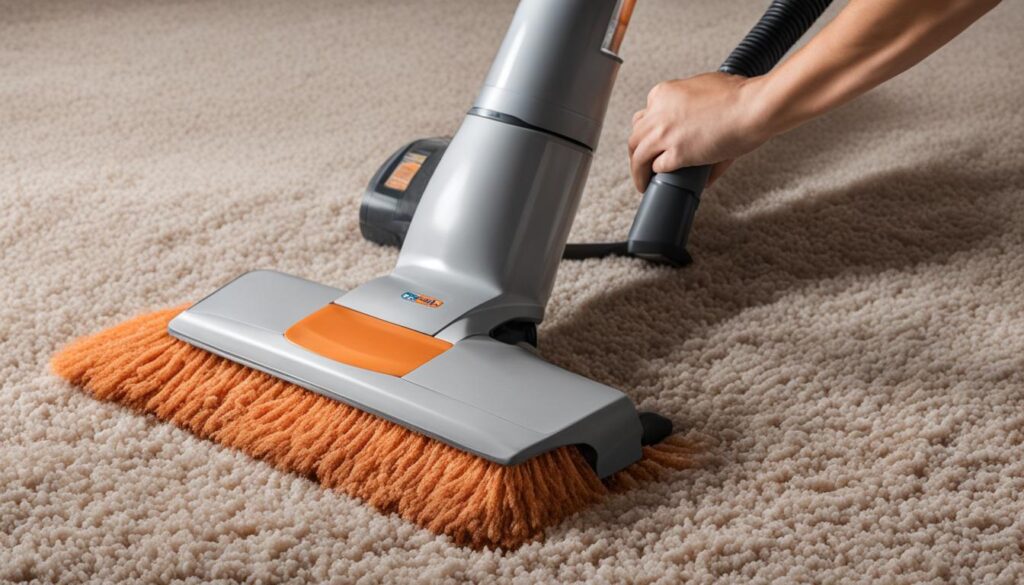
The Complete Guide to how to get rid of Mold in carpet
Welcome to our comprehensive guide on how to effectively remove mold from your carpets. Mold growth in carpets can not only be unsightly but also pose health risks for you and your family. By following the expert tips and strategies outlined in this guide, you’ll be able to successfully eliminate mold and create a safe, mold-free environment in your home.
Key Takeaways:
- Regularly inspect your carpets for signs of mold growth.
- Address the underlying causes of mold, such as moisture and poor ventilation.
- Act quickly and follow proper steps when removing mold from carpets.
- Use appropriate cleaning solutions and techniques to ensure effective mold remediation.
- Maintain a regular cleaning and maintenance routine to prevent future mold growth.
Understanding the Signs and Causes of Mold in Carpets
Before diving into the removal process, it’s essential to understand the signs and causes of mold in carpets. By recognizing these indicators and addressing the underlying causes, you can prevent future mold growth and ensure the effectiveness of your removal efforts. This section will provide you with insights into identifying mold in carpets and understanding the factors that contribute to its growth.
Mold in carpets can be a cause for concern as it not only affects the appearance and cleanliness of your home but also poses potential health risks. Here are some of the signs that indicate the presence of mold in carpets:
- Visible dark spots or patches on the carpet
- A musty, damp odor in the affected area
- Increased allergic reactions or respiratory issues among household members
- Carpet discoloration or staining
- Peeling or bubbling of the carpet’s surface
While these signs can be indicative of mold growth, it’s important to note that mold can sometimes be hidden beneath the surface of the carpet. This makes it crucial to regularly inspect your carpets, especially in areas where moisture is present, such as basements, bathrooms, or areas prone to flooding.

Now that you know the signs, let’s delve into the causes of mold growth in carpets:
- Excessive moisture: Moisture is the primary catalyst for mold growth in carpets. Whether it’s due to water leaks, excessive humidity, or moisture seeping in from the subfloor, a damp environment provides an ideal breeding ground for mold.
- Poor ventilation: Inadequate airflow prevents moisture from drying, creating a humid atmosphere that promotes mold growth.
- Water damage: Floods, leaks, or spills that aren’t promptly and properly dried can result in extensive moisture accumulation, leading to mold development in carpets.
- Inadequate carpet cleaning: Infrequent or improper cleaning routines can allow dirt, dust, and organic debris to accumulate, providing nutrients for mold to thrive.
By identifying these causes, you can take proactive measures to prevent mold growth in carpets. Regular carpet maintenance, prompt repair of leaks or water damage, and adequate ventilation can significantly reduce the risk of mold infestation.
Steps to Remove Mold from Carpets
Once you’ve identified mold in your carpets, it’s crucial to take immediate action to eliminate it. By following the step-by-step process outlined below, you’ll be well-equipped to effectively remove mold from your carpets and restore a clean and healthy living environment.
-
Prepare the area: Before you begin the mold removal process, make sure to take adequate precautions to protect yourself. Wear gloves, a mask, and eye protection to prevent any potential health risks. Open the windows or use fans to ventilate the area.
-
Remove loose mold: Start by gently brushing or vacuuming the carpet to remove any loose mold spores. Be cautious not to spread the spores further, and dispose of the vacuum bag or clean the canister immediately after use.
-
Treat the affected area: Mix a solution of warm water and mild detergent or a carpet-specific mold removal product. Dampen a clean cloth or sponge with the solution and gently scrub the affected area. Avoid excessive moisture to prevent further mold growth.
-
Rinse and dry: After treating the mold, rinse the area with clean water and blot it dry using a clean towel or paper towels. Ensure the carpet is thoroughly dried to prevent moisture from lingering, as it can contribute to mold regrowth.
-
Deep clean the carpet: For a more thorough cleaning, consider using a steam cleaner with a carpet-specific mold remediation solution. This can help penetrate deep into the carpet fibers and remove any remaining mold spores.
-
Monitor for future mold growth: After completing the mold removal process, keep a close eye on your carpets for any signs of mold regrowth. Address any moisture issues, such as leaks or excessive humidity, to prevent mold from returning.
By following these DIY carpet mold remediation steps, you can effectively remove mold from your carpets and create a clean, mold-free environment for your home.

Conclusion
Ensuring a clean and mold-free environment in your home is vital for the health and well-being of your family. By following the expert guidance provided in this comprehensive guide, you now have the knowledge and strategies to effectively remove mold from your carpets.
Remember, vigilance is key. Regular inspections and prompt action are essential in preventing mold growth and minimizing its impact on your carpets. By addressing the underlying causes and taking the necessary steps outlined in this guide, you can maintain a clean and healthy living space.
If you require professional mold assessment, prevention, or remediation services in Miami, Florida, trust the experts at Fix Mold Miami. Contact them at 305-465-6653 for prompt and reliable assistance.




